
Born in 1904, Theodor Seuss Geisel, better known as Dr. Seuss, became one of the best-known and beloved children’s book authors, and his work still enchants readers. Both a writer and an illustrator, Dr. Seuss published more than 60 books in his lifetime, most with rhyming (or tongue-twisting) verses and fantastical drawings of imaginary places and animals. All told, more than 700 million copies of his books have been sold globally.
LIke many authors, Dr. Seuss saw his manuscripts rejected before his first book was published. After 27 turn-downs, his first literary effort, “And to Think I Saw It on Mulberry Street,” was published in 1937. His first bestseller didn’t come until the 1957 publication of “The Cat in the Hat.” Today, the chaos-causing feline with the red-and-white-striped top hat is one of the most famous literary characters.
Another testament to Dr. Seuss’s timeless popularity is the fact that several of his books, like “How the Grinch Stole Christmas,” “Horton Hears a Who,” “The Lorax,” and the best-selling “The Cat in the Hat,” have been made into movies. (See which Seuss-inspired films are among the highest-grossing kids’ movies of all time.)
Of all the books he wrote, some are more popular than others. To determine the most famous books by Dr. Suess, 24/7 Tempo reviewed data on Wikipedia pageviews for all of his books. The books are ranked based on daily average pageviews between Jan. 1, 2022 to Dec. 31, 2022.
Click here to see the 25 most popular books by Dr. Seuss
In his books, Dr. Seuss encouraged his young readers to take chances and accept each other’s differences. Yet Dr. Seuss explored adult topics in his children’s books, too. “The Lorax” is a plea for preserving the environment. The Cold War-era “The Butter Battle Book” warns about the dangers of mutual assured destruction in the nuclear age.
But his books aren’t without controversy. In recent years, several Dr. Seuss books have been cited for racist imagery. In “If I Ran the Zoo,” African and Asian figures are portrayed in stereotyped costumes. “And to Think That I Saw It on Mulberry Street” contains a racist depiction of an Asian man. (Here are 30 things you didn’t know about Dr. Seuss.)
The estate of the late author who died in 1991 said in 2021 it would no longer publish those books, and have similarly 86’d “McElligot’s Pool” (for its depiction of “Eskimos”), “On Beyond Zebra!” (potentially insulting drawing of a Middle Eastern man and use of the word “spazz”), “Scrambled Eggs Super!” (caricatures of an Arab or Turkish man), and “The Cat’s Quizzer” (seemingly mocking the Japanese).

25. Wacky Wednesday
> Daily avg. Wikipedia pageviews: 34
> Publication year: 1974
An unnamed young boy is having quite the wacky day. When he wakes up, he sees a shoe on the wall and the ceiling. He goes to school and even more wacky things – 20 in total – happen. He also sees a bird in a shoe, and the sun colored green. When he tries to warn his teacher and classmates they don’t believe him. A patrolman tells him it will all end when all the wacky things have been counted.
[in-text-ad]
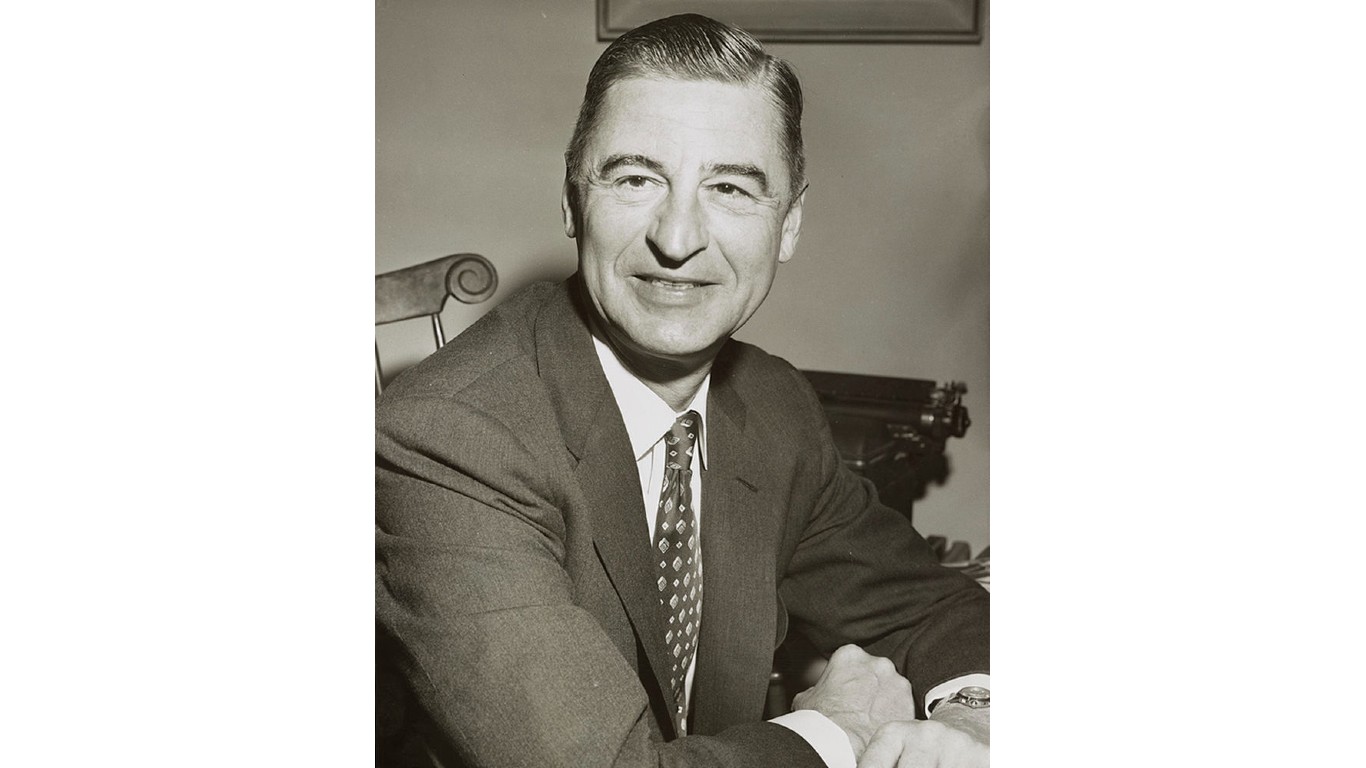
24. The Seven Lady Godivas
> Daily avg. Wikipedia pageviews: 40
> Publication year: 1939
One of two Seuss books written for adults, “The Seven Lady Godivas” re-tells the legend of Lady Godiva, the wife of an English earl who rode through the streets naked to protest excessive taxes. When a man – now remembered as “Peeping Tom” – snuck a look at her, he was struck blind. In the Seuss version, there are seven naked sisters and their lovers. After the death of their father on a horse, the sisters vow to postpone their marriages until they uncover all noble horse truths. This leads to a bevy of horse idioms, such as “Don’t look a gift horse in the mouth” and “You can lead a horse to water, but you can’t make him drink.” Considered a flop in 1939, the book was republished in 1987, but again failed.
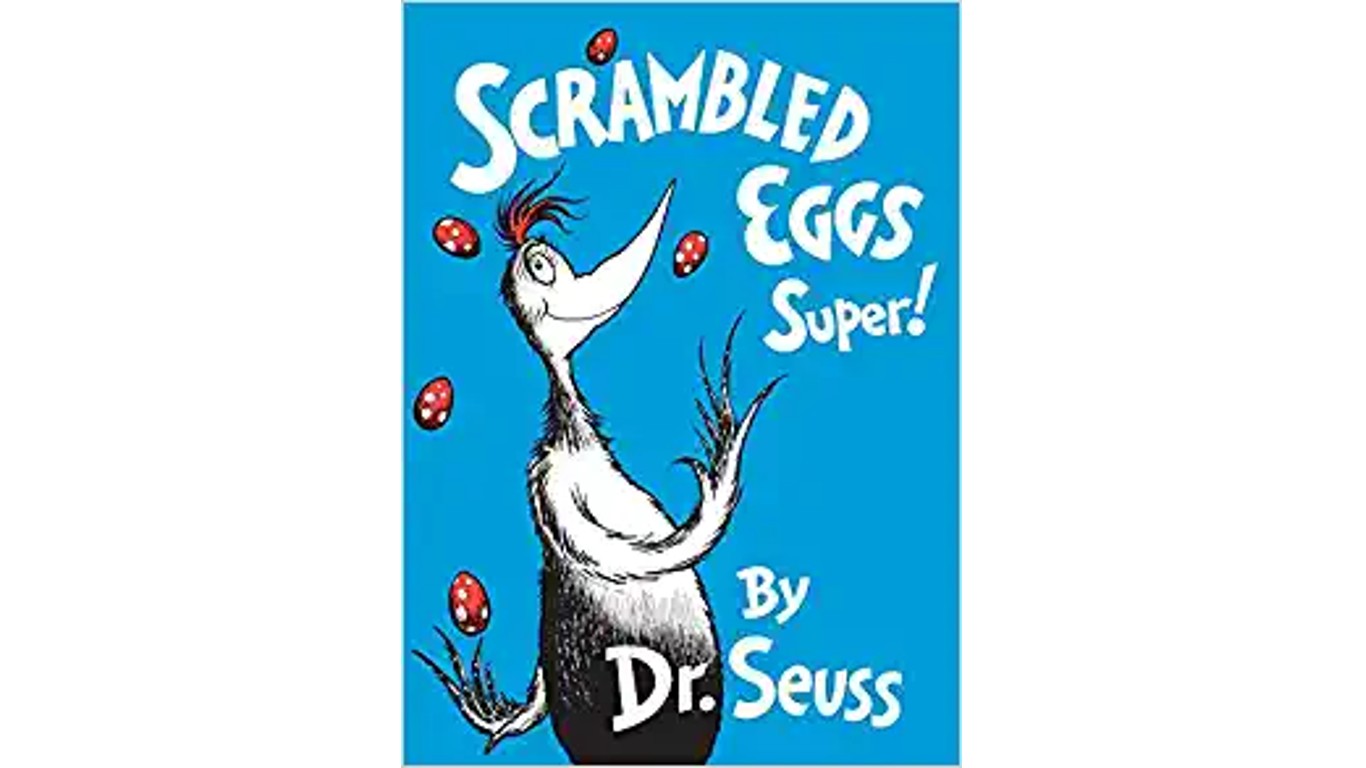
23. Scrambled Eggs Super!
> Daily avg. Wikipedia pageviews: 41
> Publication year: 1953
A young boy named Peter T. Hopper loves eggs. But not the kind that comes from hens. Instead, he travels the world collecting eggs from odd birds, like the Shade-Roosting Quail and the Grickly Gactus, to find the best tasting scrambled eggs. (This is one of the Dr. Seuss titles no longer being published)
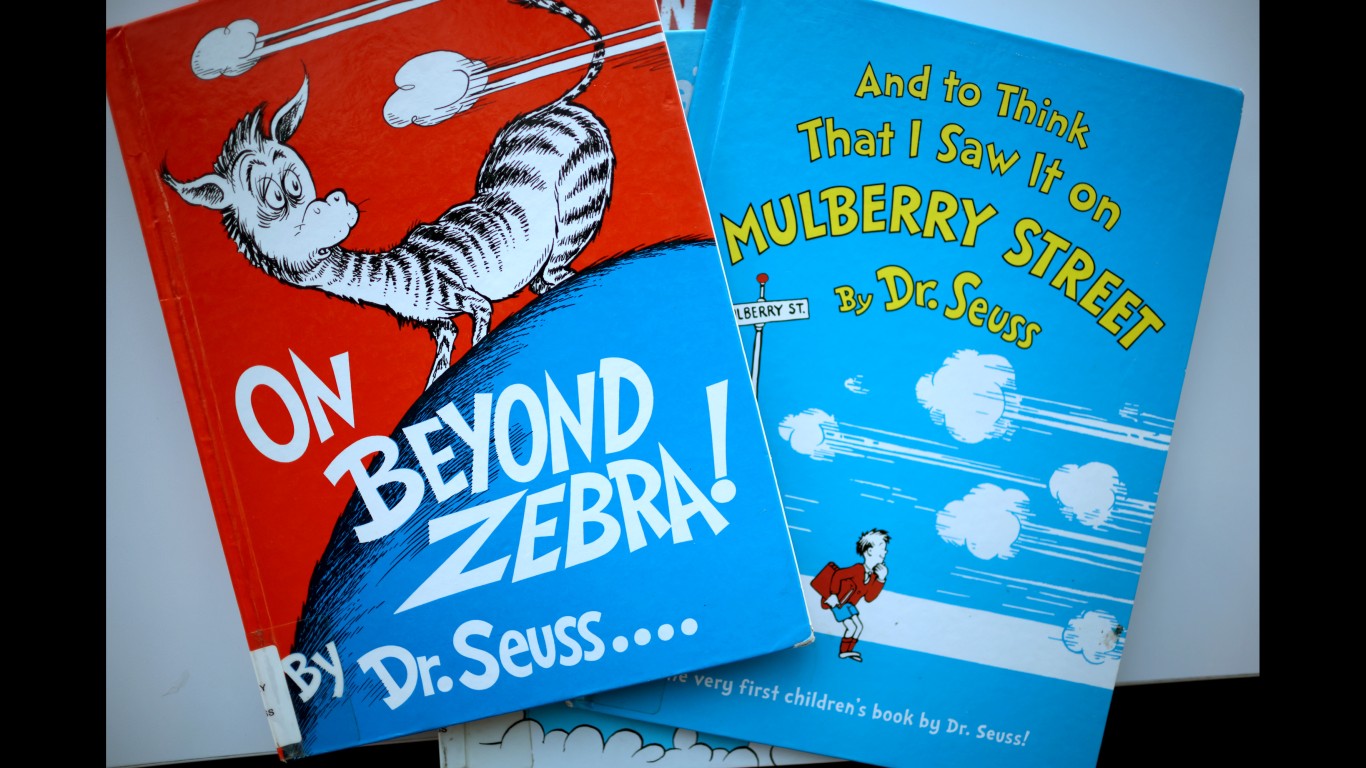
22. On Beyond Zebra!
> Daily avg. Wikipedia pageviews: 45
> Publication year: 1955
In On Beyond Zebra, Seuss through a young narrator invents a whole new bunch of letters of the alphabet beyond the traditional 26. Each letter corresponds to a fantastical creature. For example, HUMPF is a Humpf-Humpf-a-Dumpfer and Fuddle is Miss Fuddle-dee-Duddle. (Problematic imagery has taken this title out of the publication roster.)
[in-text-ad-2]
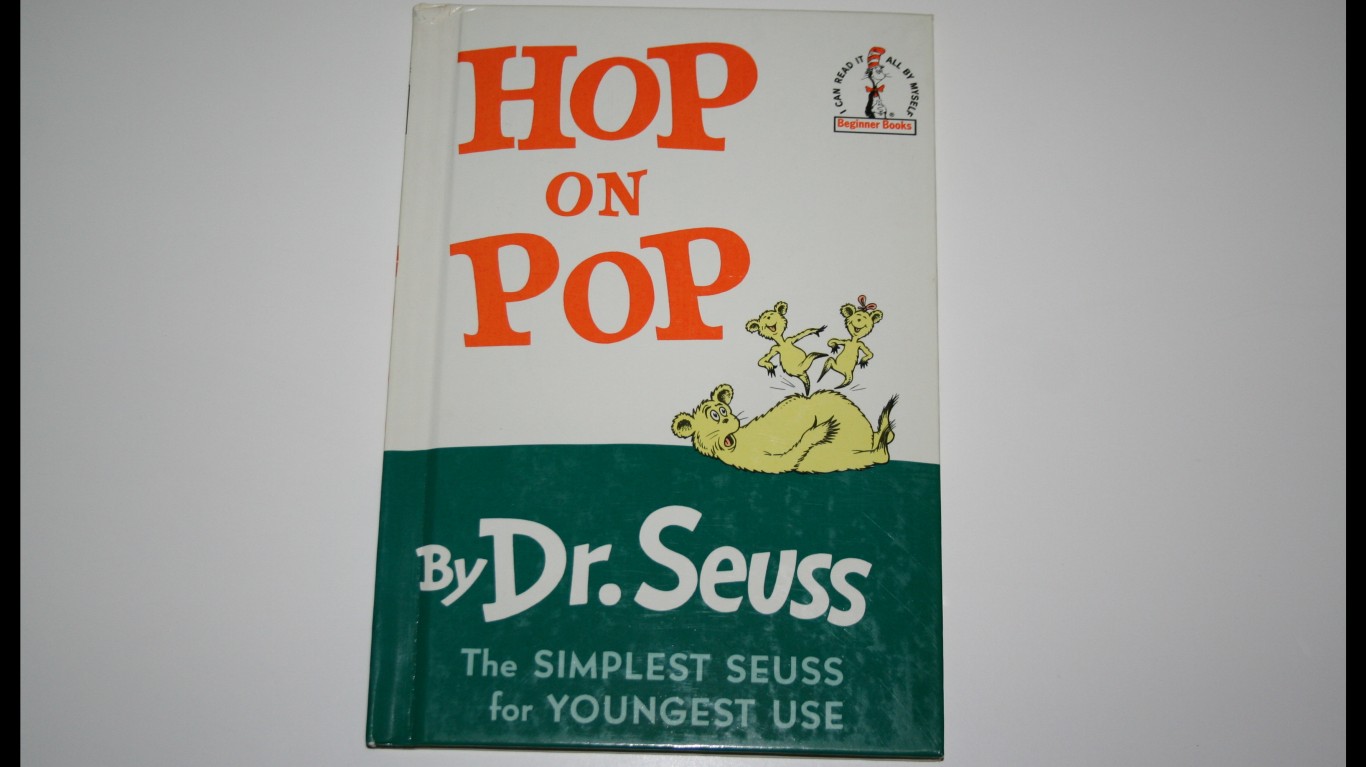
21. Hop on Pop
> Daily avg. Wikipedia pageviews: 48
> Publication year: 1963
Written for very young children, “Hop on Pop” introduces toddlers to rhymes, such as “hop” and “pop,” “cup” and “pup,” and “mouse” and “house.” In 2013, the Toronto Public Library received a complaint about the book, saying it promoted violence against fathers. The library decided against removing what it considered a humorous and well-loved children’s book.

20. Daisy-Head Mayzie
> Daily avg. Wikipedia pageviews: 49
> Publication year: 1995
One day in class, Mayzie sprouts a daisy from her head. She doesn’t know why it happened or what can be done. An agent makes her a celebrity, but the Cat in the Hat, who serves as narrator, persuades her to go home. She eventually understands her problem, and the daisy goes away. But it does pop up on occasion. (The book was published after Dr. Seuss’s death.)
[in-text-ad]
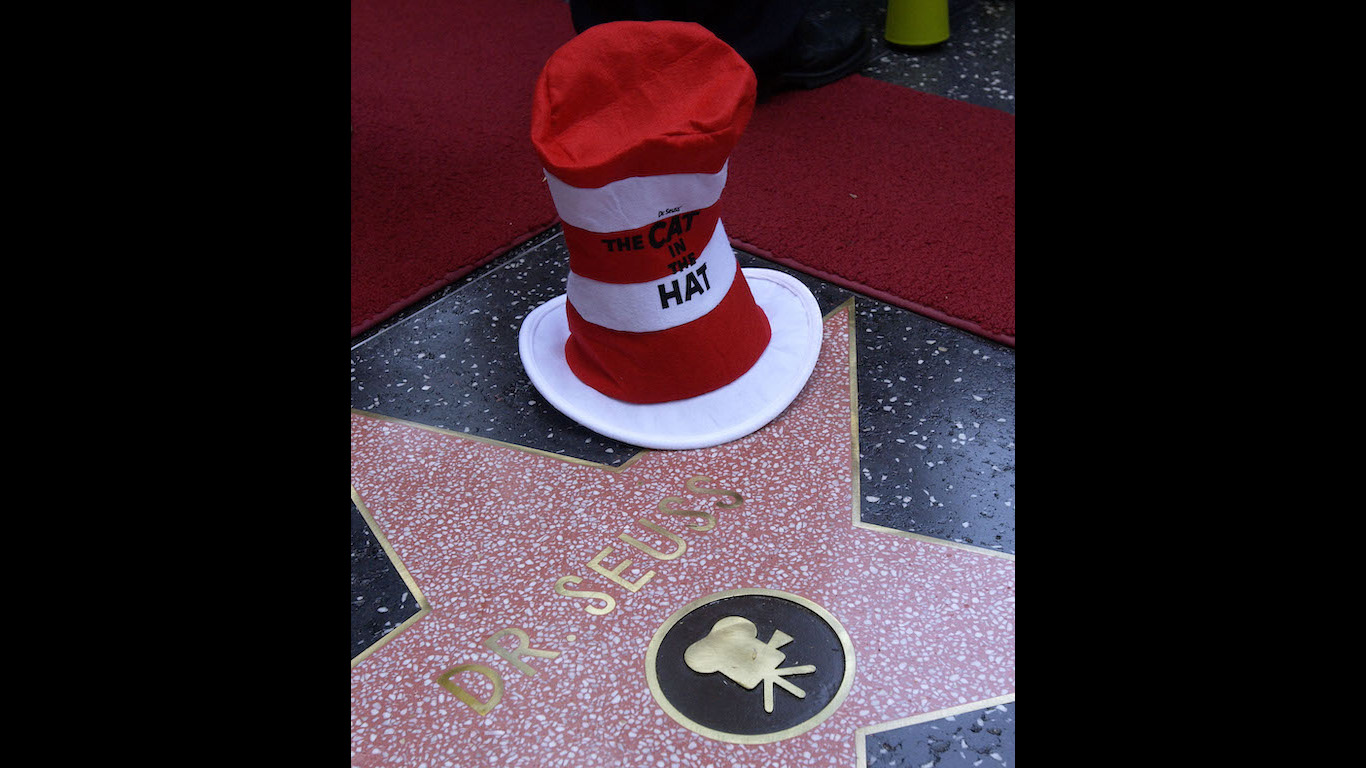
19. The Pocket Book of Bоners
> Daily avg. Wikipedia pageviews: 58
> Publication year: 1931
Known more for his literary works and rhyming poetry, Dr. Seuss was also an accomplished illustrator. In 1931, he contributed art for a book, “Bоners.” (Don’t get upset: The term means “bloopers.”) The bloopers came from unintentionally funny answers from youngsters. One example: “King Arthur collected all the fine brave good-looking young men of his time and called them the Knuts of the Round Table.”
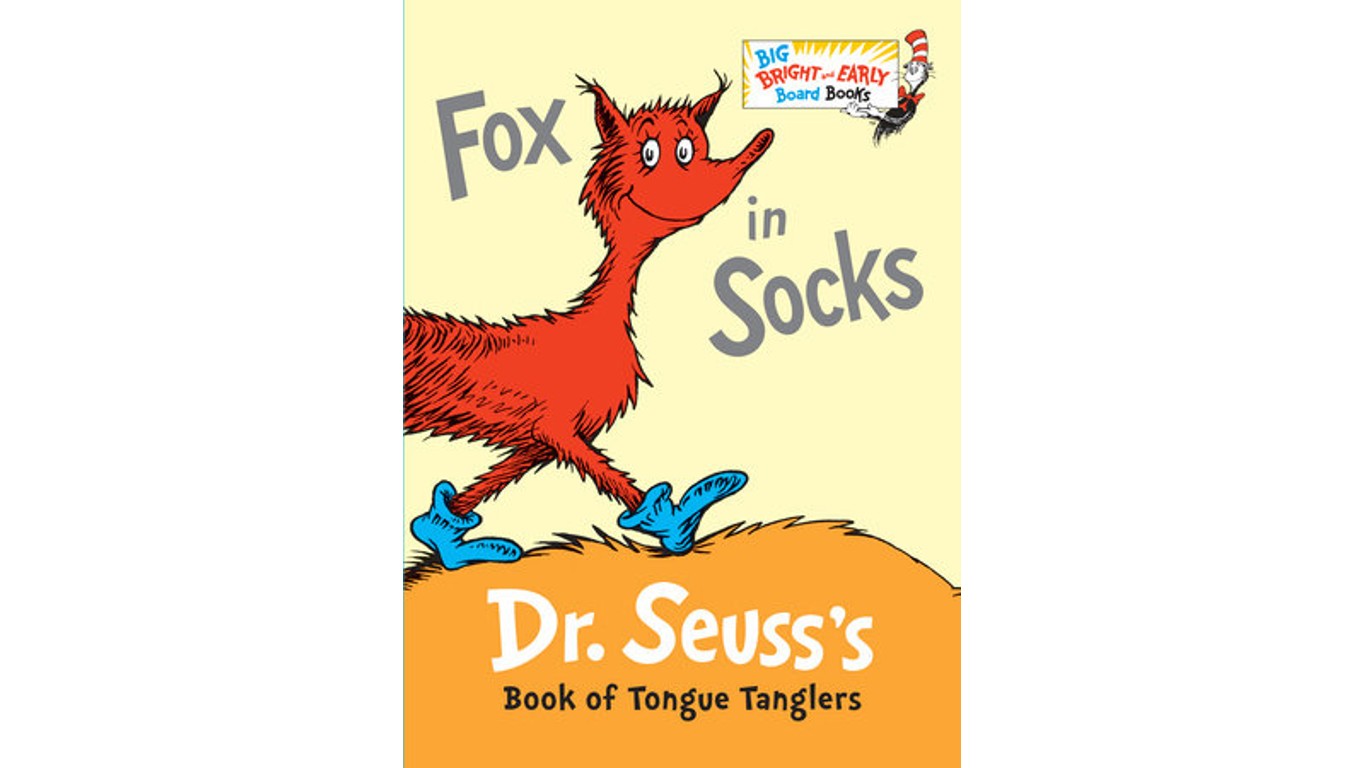
18. Fox in Socks
> Daily avg. Wikipedia pageviews: 58
> Publication year: 1965
“Fox in Socks” tells the story of a fox and a creature called Knox. The fox tries to get Knox to say a series of tongue twisters, but the yellow creature cannot. Angered, Knox puts the fox in a bottle with the final words – a “tweetle beetle noodle poodle bottled paddled muddled duddled fuddled wuddled fox in socks.”
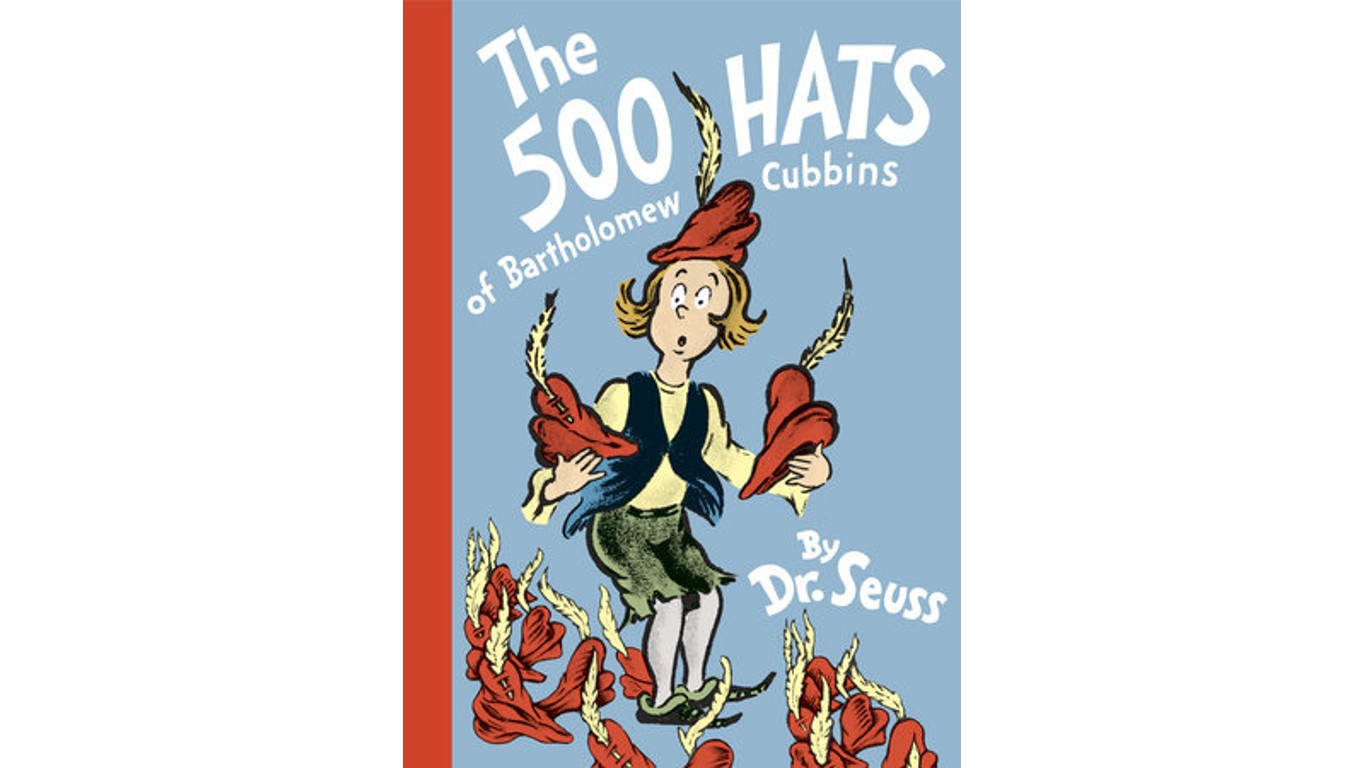
17. The 500 Hats of Bartholomew Cubbins
> Daily avg. Wikipedia pageviews: 61
> Publication year: 1938
Set in a feudal kingdom, a young boy, Bartholomew Cubbins, angers the king when every time he takes off his hat in deference to the ruler another hat appears on his head. King Derwin of Didd has the boy thrown in a tower. But in exchange for the 500 hats that have materialized, Bartholomew is given 500 gold coins and freed. Unlike most of his works, Dr. Suess wrote this book in prose, not rhymes or metered verse.
[in-text-ad-2]
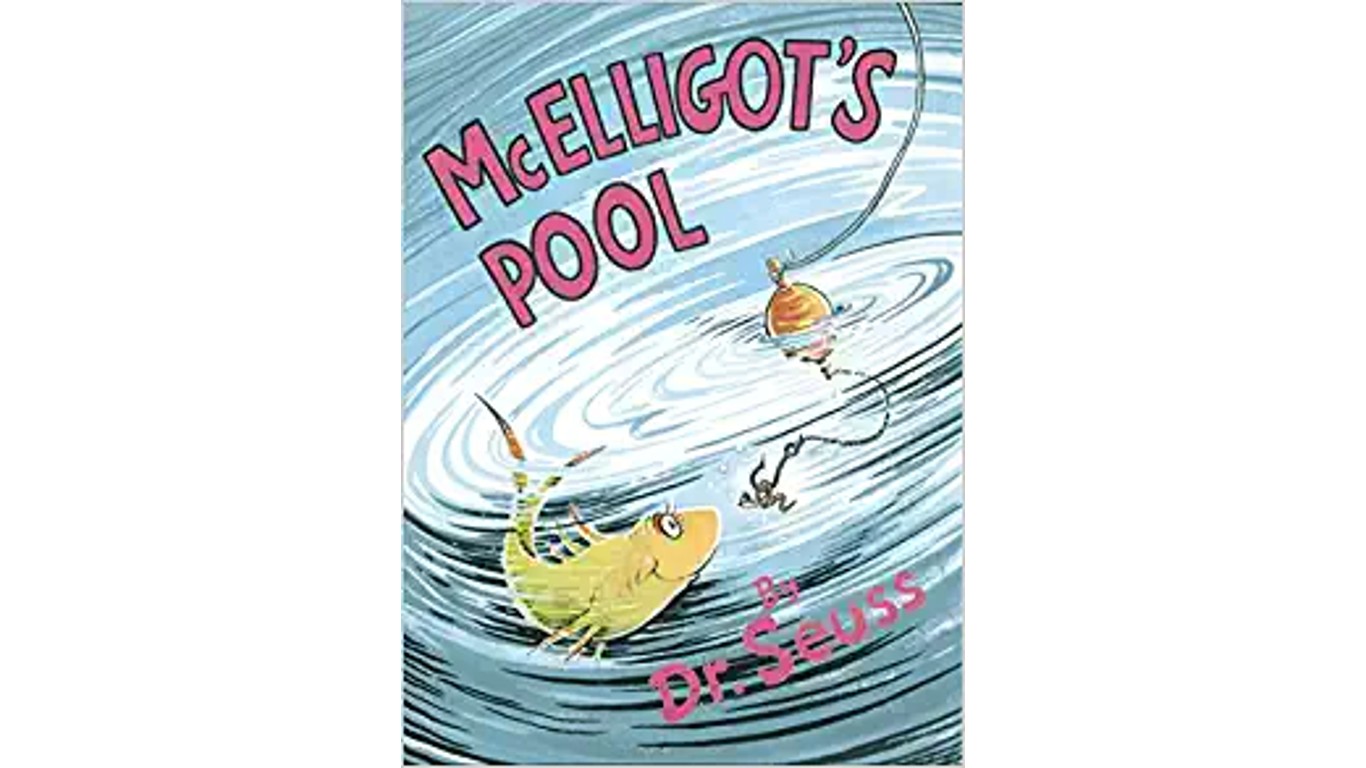
16. McElligot’s Pool
> Daily avg. Wikipedia pageviews: 65
> Publication year: 1947
Young Marco has been fishing in McElligot’s pool when a farmer tells him no fish can be caught there. Instead of giving up, Marco uses his imagination to think of all the fish he could catch, like Circus Fish, Dog Fish, and Eskimo Fish “from beyond Hudson Bay” – the last of these considered problematic, leading to the book going out of print – if he is patient. The theme of the book is never to limit a child’s imagination.
15. The Cat in the Hat Comes Back
> Daily avg. Wikipedia pageviews: 78
> Publication year: 1958
In this sequel to “The Cat in the Hat,” the mischievous feline returns for more shenanigans. After Sally and Conrad’s mother leaves, she instructs them to clear away a pile of snow. But more trouble ensues when the Cat eats cake in the bathtub with the water running, leaving a pink stain all over. Further chaos erupts as a gaggle of smaller cats enter the house. Sally and Conrad attempt to clean up the mess, but all ends well.
[in-text-ad]
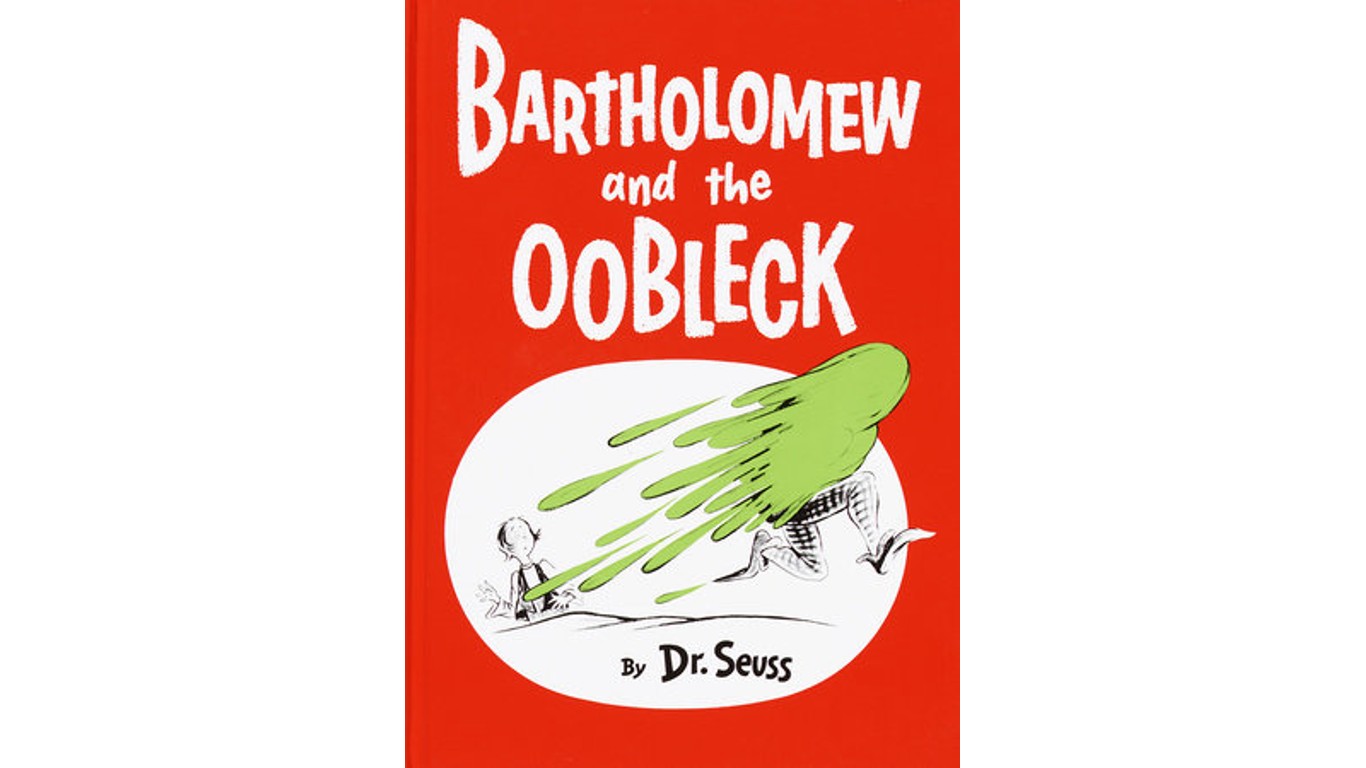
14. Bartholomew and the Oobleck
> Daily avg. Wikipedia pageviews: 85
> Publication year: 1949
Bartholomew returns, this time as a page boy to King Derwin. When the bored king orders his magicians to come up with a new substance to fall from the sky, he unleashes a storm of sticky green glop called Oobleck. But Bartholomew stands up to the king, and says he must apologize for the mess he caused. The king does so, and the skies are right once again.

13. Horton Hatches the Egg
> Daily avg. Wikipedia pageviews: 94
> Publication year: 1940
Horton, a giant elephant, is asked by Mayzie, a bird, to sit on her egg for a short time until she returns. But Mayzie is lazy and never returns. Despite hardships, Horton doesn’t abandon the egg. Eventually, the egg hatches and a creature both bird and elephant emerges. The creature stays with Horton, while Mayzie leaves with nothing.

12. If I Ran the Zoo
> Daily avg. Wikipedia pageviews: 117
> Publication year: 1950
A tribute to a young boy’s imagination, “If I Ran the Zoo” tells the story of Gerald McGrew, who visits a zoo. Unimpressed by the animals he sees, he envisions more exotic creatures, like a lion with 10 feet and the Fizza-ma-Wizza-ma-Dill – “the world’s biggest bird from the island of Gwark, who eats only pine trees, and spits out the bark.” He says if he ran the zoo he would free all his imaginary animals. However, the book was one of six cited for racist images, including two characters from “the African island of Yerka” illustrated as shirtless, shoeless, and resembling monkeys. The estate of the author said it would no longer publish the book in 2021.
[in-text-ad-2]
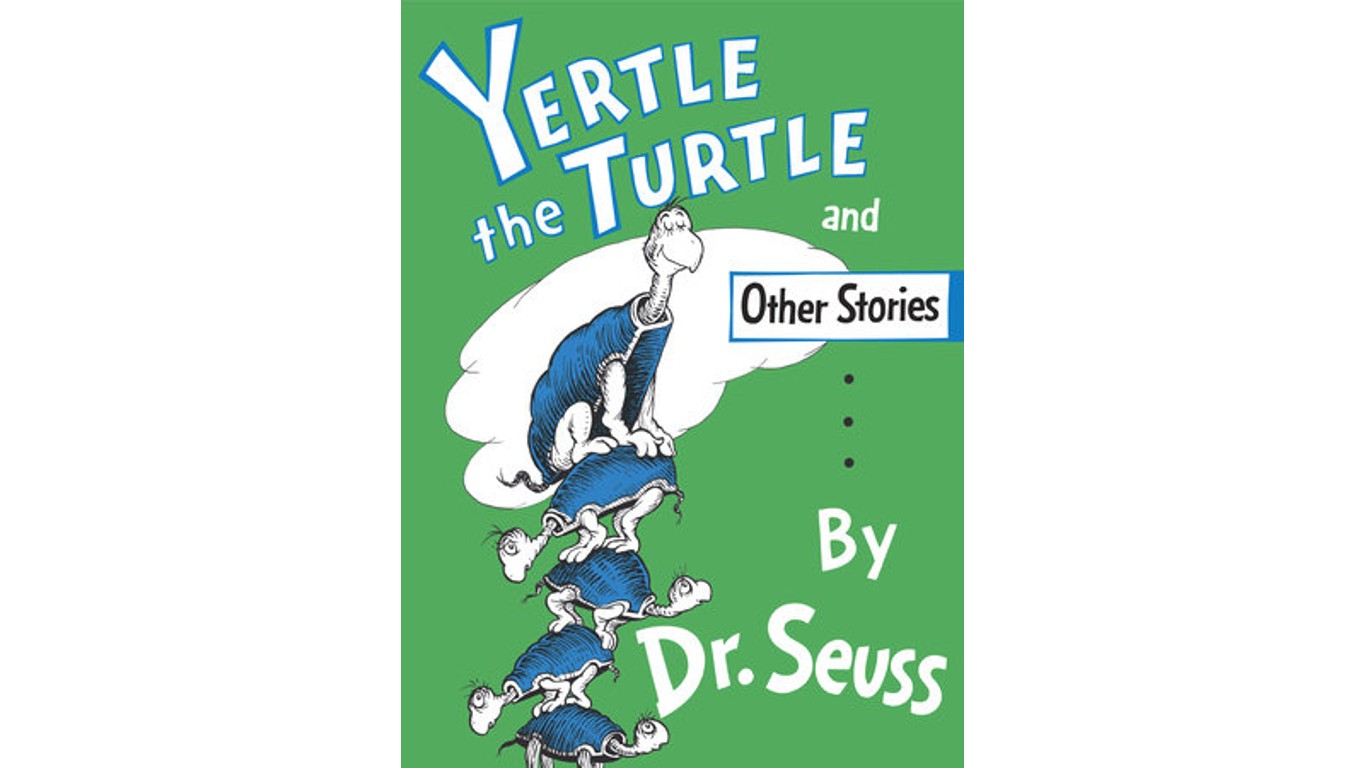
11. Yertle the Turtle and Other Stories
> Daily avg. Wikipedia pageviews: 133
> Publication year: 1958
Yertle the Turtle is king of the pond. But he wants to sit higher than his stone allows him. He orders other turtles to pile up beneath him so he can see further. Eventually, the turtle at the bottom of the pile, Mack, has had enough and burps, which tumbles Yertle in the mud. The other stories are about a young girl-bird, Gertrude McFuzz, who wants a bigger feather, and a bear and a rabbit who brag about their hearing and smelling abilities.

10. One Fish, Two Fish, Red Fish, Blue Fish
> Daily avg. Wikipedia pageviews: 146
> Publication year: 1960
Two children discover the wonder of all the creatures in the world, from multiple-footed animals to Wumps and Nooks. With the help of these imaginary creatures, the book teaches young people to accept our differences.
[in-text-ad]
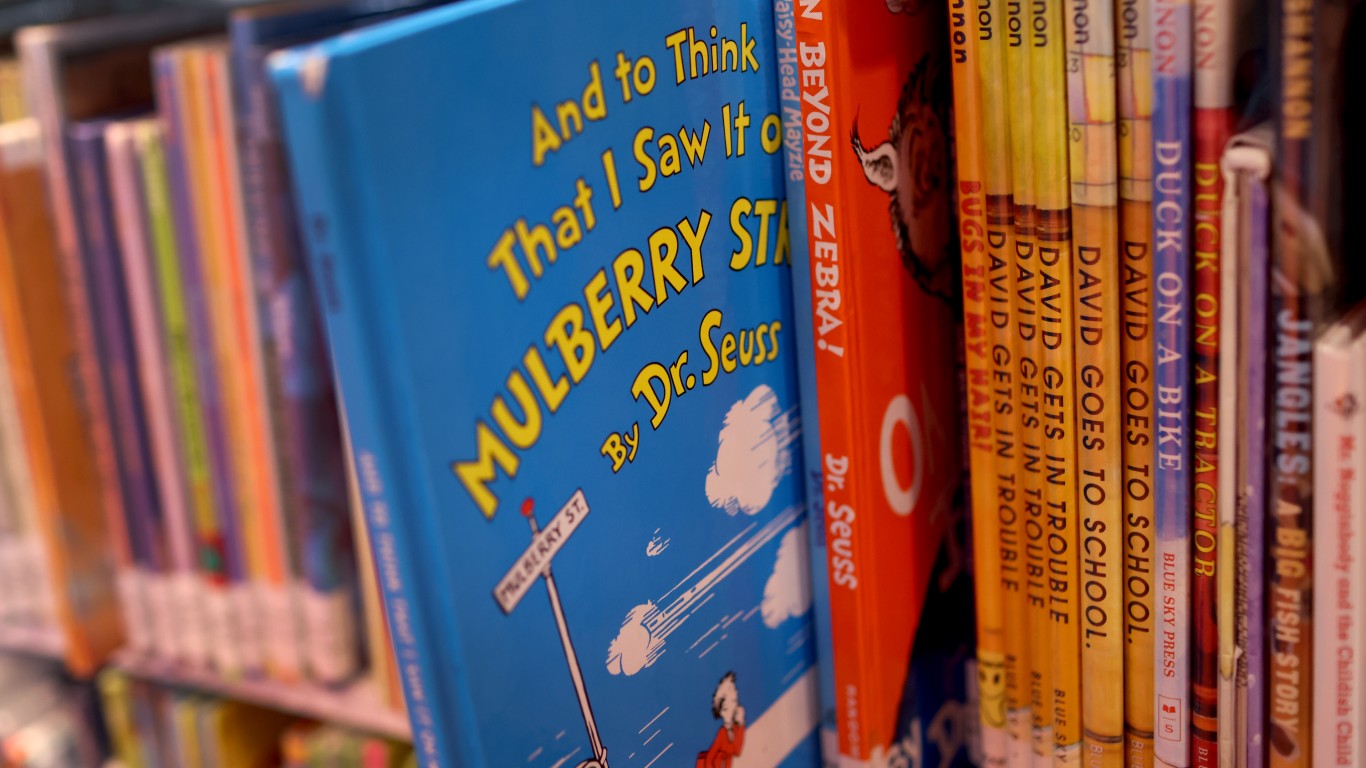
9. And to Think That I Saw It on Mulberry Street
> Daily avg. Wikipedia pageviews: 173
> Publication year: 1937
Young Marco conjures imaginary people and vehicles along Mulberry to tell his Dad about. In 2021, the Seuss estate announced it would no longer publish “And to Think That I Saw It on Mulberry Street” because of a racist depiction of an Asian man.
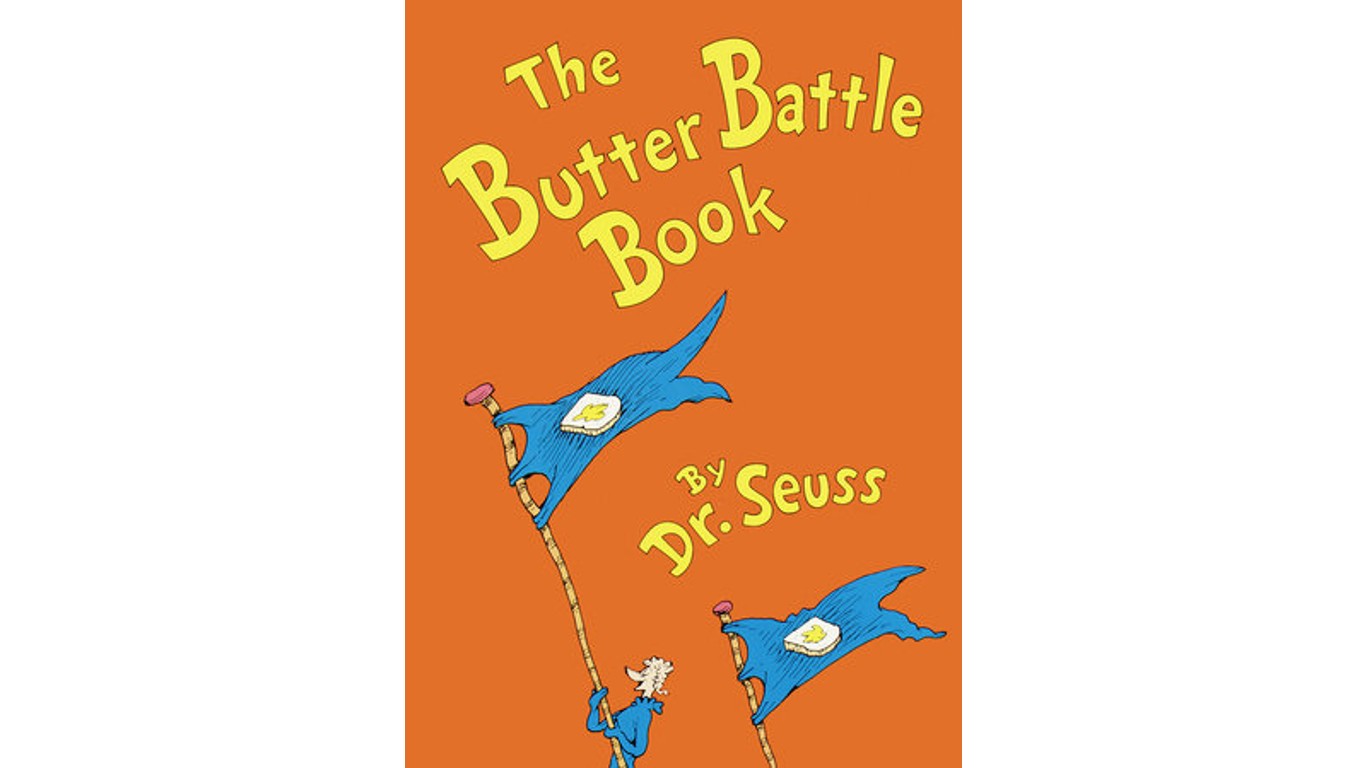
8. The Butter Battle Book
> Daily avg. Wikipedia pageviews: 215
> Publication year: 1984
Written during the Cold War era, “The Butter Battle Book” depicts the ongoing battle between the Yooks and the Zooks. Each side butters their bread on opposite sides. The conflict leads to an escalating arms race with both sides poised for mutual assured destruction in the end.

7. The Sneetches and Other Stories
> Daily avg. Wikipedia pageviews: 236
> Publication year: 1961
Another story about accepting differences, the bird-like Sneetches are divided into two groups: One with stars on their bellies and others with no star. The star-bellied Sneetches believe they are superior. When Sylvester McMonkey McBean offers to solve the problem by adding or subtracting a star, the Sneetches realize they’ve been tricked and decide all Sneetches are equal.
[in-text-ad-2]
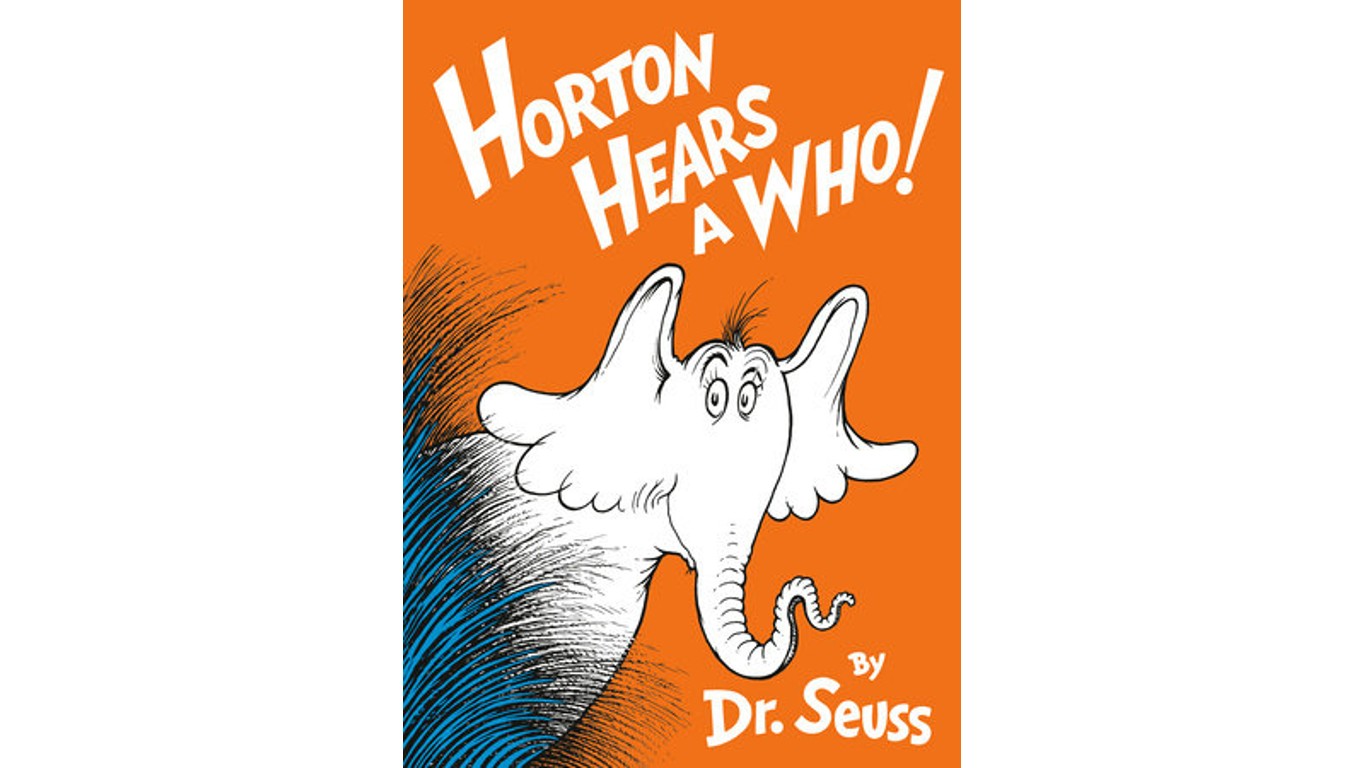
6. Horton Hears a Who!
> Daily avg. Wikipedia pageviews: 295
> Publication year: 1954
Kindly elephant Horton stumbles upon a tiny world – Whoville – with tiny humans. At the request of the Mayor of Whoville, Horton declares he will protect them, saying “a person’s a person, no matter how small.” Despite other animals mocking him at first, Horton protects the people of Whoville.

5. Oh, the Places You’ll Go!
> Daily avg. Wikipedia pageviews: 299
> Publication year: 1990
Like many Dr. Seuss books, “Oh, the Place You’ll Go!” has a deeper meaning for children and adults. The book encourages the reader to take chances and try new things. The lines – “You have brains in your head. You have feet in your shoes. You can steer yourself in any direction you choose. You’re on your own and you know what you know, and YOU are the one who’ll decide where to go” – sums up the theme of the book.
[in-text-ad]

4. Green Eggs and Ham
> Daily avg. Wikipedia pageviews: 450
> Publication year: 1960
The importance of trying new things is the theme of “Green Eggs and Ham.” Sam-I-am offers an unnamed man a plate of green eggs and ham. The man refuses saying he does not like green eggs and ham. Finally, the man tries the green eggs and ham and declares: “I do so like green eggs and ham. Thank you. Thank you, Sam-I-Am.”
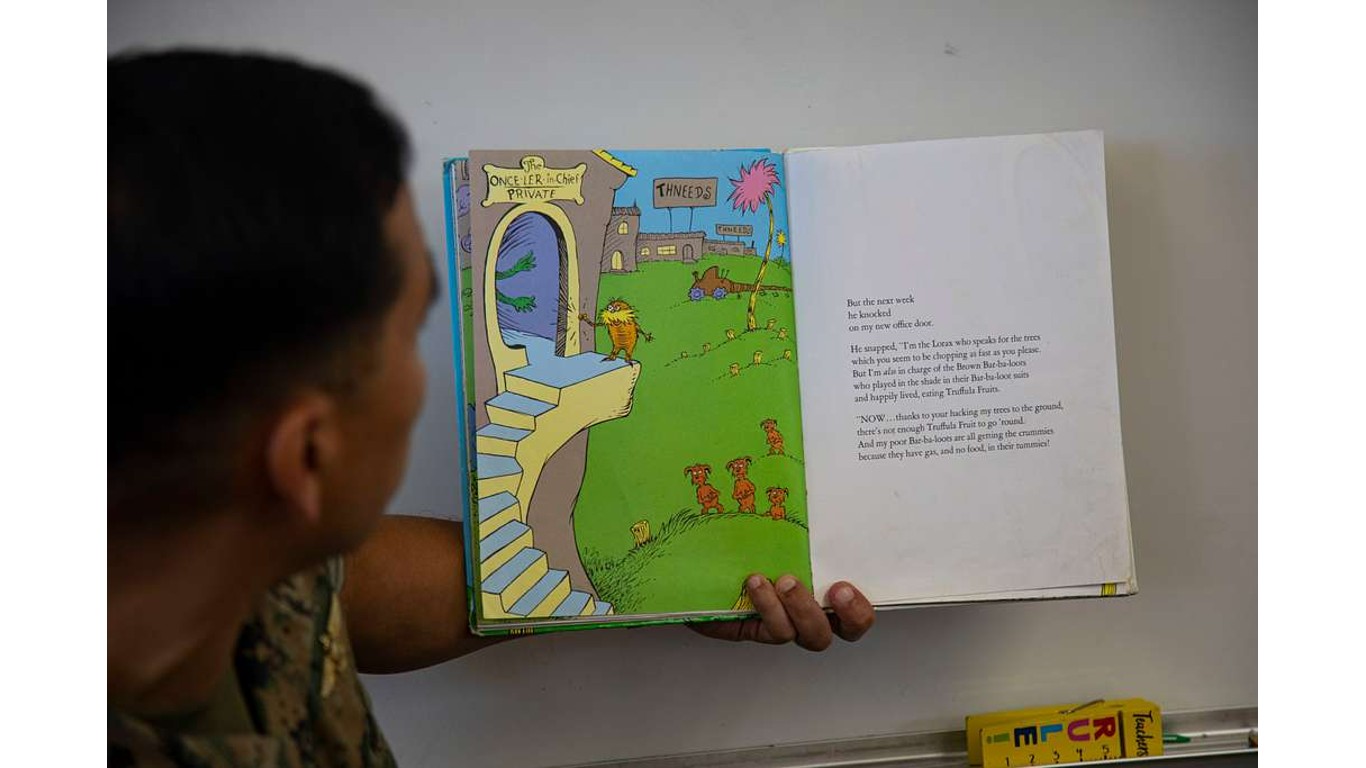
3. The Lorax
> Daily avg. Wikipedia pageviews: 599
> Publication year: 1971
A fable about protecting the environment, “The Lorax” tells the story of the forest of the Truffula trees felled by Once-Ler to build a business. When a creature named the Lorax protests, Once-Ler ignores him and continues to destroy the land. After all the trees are gone, Once-Ler realizes the damage he caused and repents, remembering what the Lorax told him, “Unless someone like you cares a whole awful lot, nothing is going to get better. It’s not.” Once-Ler gives a boy some seeds to regrow the forest with the hope the Lorax and other animals will return.

2. How the Grinch Stole Christmas!
> Daily avg. Wikipedia pageviews: 666
> Publication year: 1957
Made into three movies and a still beloved television cartoon, “How the Grinch Stole Christmas” shows how the spirit of Christmas warmed the heart of the Grinch, who was born with a heart two sizes too small. On Christmas Eve, the Grinch steals all of Whoville’s presents, hoping to stop the celebration. But when the residents of Whoville still sing with joy on Christmas, the Grinch is changed forever, realizing Christmas is more than gifts.
[in-text-ad-2]

1. The Cat in the Hat
> Daily avg. Wikipedia pageviews: 688
> Publication year: 1957
Considered a classic of children’s literature, this book opens with an unnamed boy and his sister Sally sitting at home on a rainy day. Soon, a Cat in a red-and-white-striped top hat and red bow tie arrives and chaos ensues, with pictures flying off the wall and objects dropped on the floor. But all ends well when the Cat cleans everything up before the children’s mother comes home. The book was made into a 1971 animated TV series and a live action movie in 2003.
Credit card companies are handing out rewards and benefits to win the best customers. A good cash back card can be worth thousands of dollars a year in free money, not to mention other perks like travel, insurance, and access to fancy lounges. See our top picks for the best credit cards today. You won’t want to miss some of these offers.
Flywheel Publishing has partnered with CardRatings for our coverage of credit card products. Flywheel Publishing and CardRatings may receive a commission from card issuers.
Thank you for reading! Have some feedback for us?
Contact the 24/7 Wall St. editorial team.

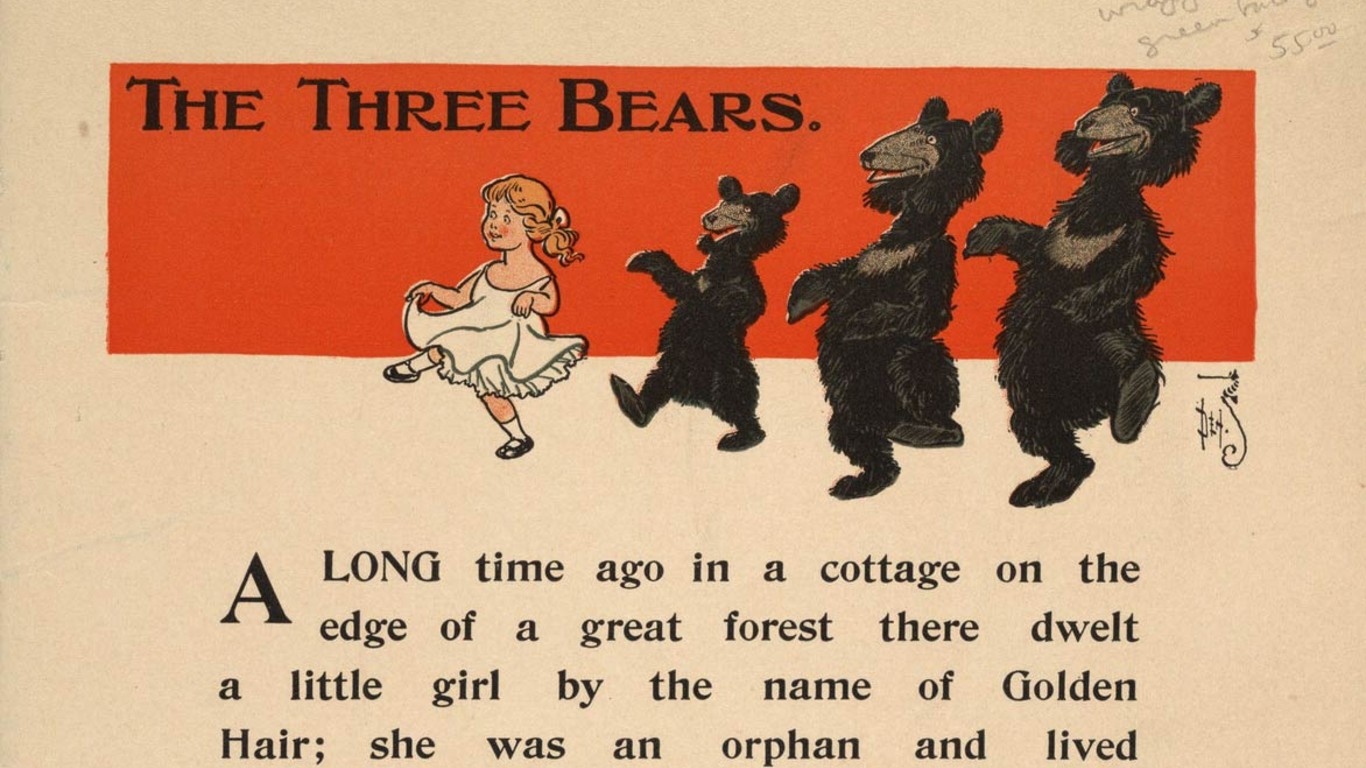 24/7 Wall St.
24/7 Wall St. 24/7 Wall St.
24/7 Wall St.